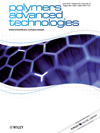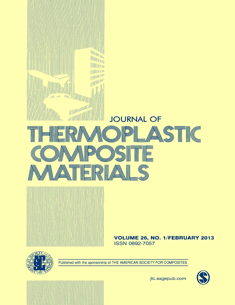
MATERIALE PLASTICE
Scope & Guideline
Transforming Ideas into Material Solutions
Introduction
Aims and Scopes
- Polymer and Composite Materials Research:
The journal publishes studies on the synthesis, characterization, and application of polymeric and composite materials, often focusing on their mechanical, thermal, and chemical properties. - Biomaterials and Medical Applications:
A significant area of research includes the development of biomaterials for medical applications, such as dental restorations, prosthetics, and drug delivery systems. - Additive Manufacturing and 3D Printing:
Research on 3D printing technologies and their impact on material properties and applications is a consistent theme, highlighting the advancements in manufacturing techniques. - Environmental and Recycling Studies:
The journal also emphasizes sustainability, exploring the recycling of materials and the development of biodegradable and eco-friendly composites. - Nanotechnology in Materials Science:
The incorporation of nanomaterials into polymer matrices to enhance performance characteristics is a notable focus, showing the journal's commitment to cutting-edge materials science.
Trending and Emerging
- Advanced Functional Composites:
There is an increasing focus on developing advanced composites with unique properties for specific applications, such as electromagnetic shielding, acoustic absorption, and enhanced mechanical performance. - Biodegradable and Eco-Friendly Materials:
Research on biodegradable plastics and eco-friendly materials is on the rise, driven by environmental concerns and the push for sustainable alternatives in various industries. - Integration of Smart Materials and Sensors:
The trend towards integrating smart materials with sensing capabilities for applications in healthcare, aerospace, and automotive sectors is gaining momentum, highlighting the intersection of materials science with technology. - Computational Modeling and Machine Learning Applications:
The use of computational methods and machine learning for material design and property prediction is emerging as a significant trend, enabling more efficient and targeted research. - Nanocomposites and Hybrid Materials:
The exploration of nanocomposites and hybrid materials that combine various components to achieve superior properties is increasingly prominent, reflecting ongoing advancements in nanotechnology.
Declining or Waning
- Traditional Mechanical Testing Methods:
There has been a noticeable decrease in studies solely focused on conventional mechanical testing of materials, as more innovative and complex methodologies, such as numerical simulations and machine learning techniques, gain traction. - Basic Polymer Processing Techniques:
Research centered around basic processing techniques like injection molding and extrusion without advanced modifications or innovations is becoming less common, as the field moves towards more specialized and high-tech applications. - Generalized Studies on Conventional Plastics:
Studies that broadly address conventional plastics without specific enhancements or applications are declining, possibly due to a growing interest in novel materials and applications.
Similar Journals

MRS Communications
Empowering researchers to share transformative materials knowledge.MRS Communications is a prominent academic journal published by Springer Heidelberg, focusing on the multidisciplinary field of materials science. With ISSN 2159-6859 and E-ISSN 2159-6867, this journal has been a valuable platform for disseminating cutting-edge research since its inception in 2011. Operating from its esteemed headquarters in Heidelberg, Germany, it aims to foster collaboration and innovation among researchers and practitioners by publishing high-quality, peer-reviewed articles. Holding a Q3 ranking in the Materials Science (Miscellaneous) category, and currently positioned at the 37th percentile in the general materials science field, MRS Communications is dedicated to advancing the understanding of materials through interdisciplinary studies. The journal offers researchers an opportunity to share insights that bridge theoretical knowledge with practical applications, contributing significantly to the global materials science community. As an essential resource for researchers, professionals, and students alike, we invite you to explore the latest advancements and discussions in materials science through this influential publication.

Functional Composites and Structures
Advancing the Future of Material Innovation.Functional Composites and Structures is a prestigious academic journal published by IOP Publishing Ltd, dedicated to advancing the field of materials science with a focus on innovative composite materials and their structural applications. Established in 2019 and running through 2024, this journal uniquely bridges several disciplines, consistently ranking in the Q2 quartile across key categories including Ceramics and Composites, Electronic, Optical and Magnetic Materials, and Mechanics of Materials. With a commendable Scopus rank that places it within the top tiers of its field, the journal is instrumental for researchers, engineers, and scholars seeking to explore the latest developments in material properties, functionality, and applications. Although access options are not specified, the open-access nature of the journal promotes wider dissemination and engagement with cutting-edge research. As the demand for smarter, more efficient materials continues to grow, Functional Composites and Structures serves as a vital resource for fostering collaboration and driving innovation in material sciences.

POLYMERS FOR ADVANCED TECHNOLOGIES
Pioneering New Horizons in Polymer TechnologiesPOLYMERS FOR ADVANCED TECHNOLOGIES is a premier peer-reviewed journal published by WILEY, focusing on cutting-edge research in the field of polymers and plastics. Since its inception in 1990, the journal has established itself as a critical resource for academics and industry professionals alike, reflecting advancements and innovations in polymer science and technology. With an impressive Scopus ranking of #45 out of 161 in the Materials Science category and a 72nd percentile ranking, it ranks in the Q2 quartile for its relevance and impact within the polymers field. The journal's comprehensive scope encompasses recent developments and trends in polymer applications, synthesis, and characterization, making it essential reading for researchers looking to advance their work within this dynamic area. Researchers can submit their work in the UK, where the journal is published, and while it does not currently offer open-access options, its robust impact factor highlights the significance of the research it disseminates. Join the community of experts pushing the boundaries of polymer science by engaging with POLYMERS FOR ADVANCED TECHNOLOGIES. Continuous exploration and innovation await those who contribute to and learn from the journal’s diverse array of studies.

JOURNAL OF POLYMER SCIENCE
Transforming Ideas into Polymers: A Hub for Cutting-edge ResearchJOURNAL OF POLYMER SCIENCE, published by WILEY, is a premier, open-access journal dedicated to advancing the field of polymer science and its applications. With an ISSN of 2642-4150, it offers a platform for high-quality research and innovative ideas, contributing significantly to the understanding of polymaterials and their functionalities. The journal is recognized for its exceptional impact within various categories, consistently achieving Q1 rankings in Materials Chemistry, Physical and Theoretical Chemistry, and Polymers and Plastics, demonstrating its influential presence in the academic community. As of 2023, it holds a distinguished position in Scopus rankings, underscoring its relevance and rigorous peer-review process. By facilitating open access to vital research findings, the JOURNAL OF POLYMER SCIENCE plays a crucial role in fostering collaboration and knowledge transfer among researchers, professionals, and students, paving the way for innovative developments in polymer applications and materials science.

MACROMOLECULAR RESEARCH
Transforming Ideas into Macromolecular BreakthroughsMACROMOLECULAR RESEARCH, published by the POLYMER SOC KOREA, is a premier journal dedicated to advancing the field of macromolecular science and polymer engineering. With its ISSN 1598-5032 and E-ISSN 2092-7673, this journal has emerged as a vital platform for researchers and professionals interested in the application and development of polymers across various domains. Based in South Korea and operating as an open-access resource since its inception in 2002, MACROMOLECULAR RESEARCH consistently ranks in the Q2 category across diverse fields such as Chemical Engineering, Materials Chemistry, and Organic Chemistry as per the latest 2023 metrics. Notably, it is recognized for its substantial contributions to polymery science, increasing its visibility and impact in global research. By providing a forum for original research articles, reviews, and innovative methodologies, this journal aims to foster collaboration and knowledge sharing among scientists, engineers, and students alike. Join a community that is at the forefront of polymer research by exploring the wealth of resources and cutting-edge studies featured in MACROMOLECULAR RESEARCH.

JOURNAL OF THERMOPLASTIC COMPOSITE MATERIALS
Connecting Research and Application in Thermoplastic CompositesJOURNAL OF THERMOPLASTIC COMPOSITE MATERIALS, published by SAGE PUBLICATIONS LTD, is a cutting-edge journal dedicated to advancing the field of thermoplastic composites and their applications within ceramics and condensed matter physics. With an ISSN of 0892-7057 and an E-ISSN of 1530-7980, the journal boasts a strong academic reputation evidenced by its impressive impact factor as well as its classification in the 2023 Q2 category for both Ceramics and Composites and Condensed Matter Physics. Ranked #60 in Condensed Matter Physics and #26 in Materials Science by Scopus, the journal plays a pivotal role in disseminating innovative research findings, trends, and advancements to a global audience. Spanning research from 1988 to 2024, it serves as an essential resource for researchers, professionals, and students alike, fostering collaboration and promoting knowledge in the ever-evolving landscape of thermoplastic composite materials. Although currently not open access, the comprehensive content and critical insights provided by this journal are invaluable for those engaged in cutting-edge research and practical applications in these fields.

MATERIALS SCIENCE AND TECHNOLOGY
Unveiling the Future of Materials TechnologyMATERIALS SCIENCE AND TECHNOLOGY is a leading journal published by SAGE PUBLICATIONS INC, focusing on the interdisciplinary advancements in the field of materials science. Since its inception in 1984, the journal has provided a platform for researchers and industry professionals to present innovative findings through rigorous peer-reviewed articles. The journal holds a commendable impact factor and categorizes itself within the prestigious Q2 rank in various domains such as Condensed Matter Physics, Materials Science, Mechanical Engineering, and Mechanics of Materials according to the 2023 Quartiles. With no Open Access option, it primarily serves as a repository for in-depth studies and advancements that push the boundaries of materials engineering and application. Located in the United Kingdom, at 2455 TELLER RD, THOUSAND OAKS, CA 91320, the journal continues to attract a global readership, making it indispensable for academics, researchers, and students who aim to stay at the forefront of materials innovation.

ADVANCED COMPOSITE MATERIALS
Advancing Knowledge in Composite MaterialsADVANCED COMPOSITE MATERIALS, published by Taylor & Francis Ltd, is a leading peer-reviewed journal in the field of materials science, specifically focusing on the innovative development and applications of composite materials. With an ISSN of 0924-3046 and E-ISSN 1568-5519, this journal serves as a vital resource for researchers and professionals worldwide, examining cutting-edge advancements and methodologies in composites, ceramics, and mechanical engineering. Having secured a solid standing in the academic community, it boasts impressive Scopus rankings, such as #185 in Mechanical Engineering with a 72nd percentile and #46 in Ceramics and Composites, emphasizing its relevance and rigor. Although not an open-access publication, its insights are invaluable for those looking to explore, contribute to, and stay abreast of the latest breakthroughs in the field from 1991 through 2024. By targeting critical areas within mechanics and material sciences, the journal continues to foster innovation and scholarly discussion, making it an essential venue for specialists striving to advance the capabilities and applications of composite materials.

COMPOSITES SCIENCE AND TECHNOLOGY
Pioneering Research in Composite Materials and EngineeringComposites Science and Technology, a premier journal published by Elsevier Sci Ltd, serves as a vital resource in the fields of composite materials and engineering. With an impressive 2023 impact factor reflecting its influential contributions, this journal has established itself within the top tier of academic publishing, flaunting a Q1 ranking in both the Ceramics and Composites and Engineering (Miscellaneous) categories. Covering a diverse range of topics from the development of novel composite materials to their practical applications across various industries, it is recognized for its rigorous peer-review process and high-quality research outputs. As reflected in its Scopus rankings, Composites Science and Technology places in the 97th percentile among general engineering journals and the 94th percentile amongst ceramics and composites science literature. Researchers and professionals alike benefit from its comprehensive access to cutting-edge discoveries and advancements, making it an indispensable tool for driving innovation within this dynamic field.

Polymer-Plastics Technology and Materials
Transforming Ideas into Material SolutionsPolymer-Plastics Technology and Materials is a premier academic journal published by Taylor & Francis Inc., dedicated to the dynamic fields of chemical engineering, materials chemistry, and polymers and plastics. With an impact factor that reinforces its reputation, this journal is strategically indexed in Scopus, ranked notably within its categories (Q2), showcasing its influence and relevance in the academic community. Since its inception in 2019, the journal has served as an essential platform for researchers, professionals, and students to disseminate innovative studies and advancements in polymer science and materials technology. As an Open Access publication, it ensures that cutting-edge research is accessible to a global audience, fostering collaboration and knowledge sharing in the material sciences. Located in the United Kingdom, Polymer-Plastics Technology and Materials continues to enhance the dialogue within the industry, addressing critical challenges and exploring emerging trends that shape the future of polymer and plastics technologies.